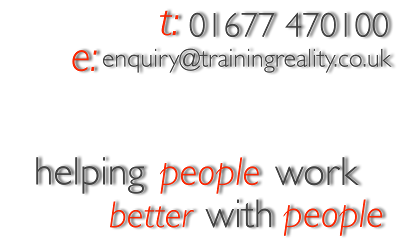Please press (at least!) one of these.
It costs you nothing, and (possibly) helps us spread the word!
Finding common ground
Friday, 4 May 2012
For most people, in most circumstances, negotiation is tough. In business, we admire and respect great sales people, and can be in awe of their capabilities. However the toughest areas of negotiation are often in a completely different arena; they come about when we have to decide on a common approach to an issue when diametrically opposed views are held.
There was a classic example of this on Radio 4's Today Programme on Wednesday morning. A new field trial of an aphid-resistant GM wheat crop is being planned by Rothamsted Research, led by Professor John Picket. Representing the other side was Gerald Miles, an organic farmer based in Pembrokeshire.
What interested me the most was not the debate, but the preamble. It was mentioned that Rothamsted Research have invited an anti-GM group called Take The Flour Back to debate openly with them. A negotiation between these two could be seen as one with the most intransigent sides imaginable.
There was, however, a glimmer of hope. There is potential common ground, in that both sides want to reduce pesticide use, reduce the carbon footprint of agriculture, and improve food security (both here and, for example, in Africa). I'd hate to predict an outcome, but if they can focus on a common, agreed objective, and negotiate openly on the methodology, they will stand a far better chance of reaching a solution.
Finding common ground is critical in these "decision making" or strategic negotiations. Using Simon Sinek's "Golden Circle" terminology, it's about looking at the why, rather than the how or the what. If negotiations (arguments) focus on either the how or the what as a starting point, the chance of success is far lower than if we start with the why. Here is a summary of how the arguments might pan out, and how the common ground can be found.
The "What"
This is very simple - it's about either running field trials of GM wheat, or not. It's what one group want to do, and what the other group want them to refrain from. There's absolutely no common ground at this level.
The "How"
There is a little more common ground here, but it's tenuous. The anti-GM group want any trials to be fully contained (i.e. in bio-secure environments). The researchers need to run open field trials, but believe they are containing the threat of cross-pollination by planting other non-GM crops around the GM section. Whilst there is room for negotiation and debate here, it's still tricky.
The "Why"
Finally, the centre of the Golden Circle, the "Why". This is the place where the common ground can be found - the reduction in chemical use, more reliable crops, and so on. Both sides want this, but they will rarely get to see how big, and how fundamental, their area of common ground is unless they start with the "why" (and work outwards), rather than trying to work inwards from the "what".
--
Most arguments, disagreements, and controversies within organisations tend to be at the "what" or the "how" level, and it's incredibly easy for things to get bogged down, relationships to crumble, and plans to fail because of this. Whilst we can't (and shouldn't try to!) avoid these disagreements, we need to ensure effort goes into reinforcing the "why" - it's the glue that holds everything together.
Please press (at least!) one of these.
It costs you nothing, and (possibly) helps us spread the word!





